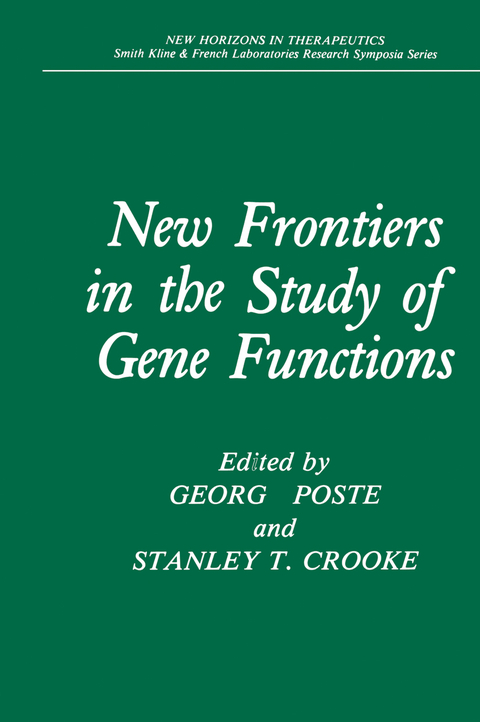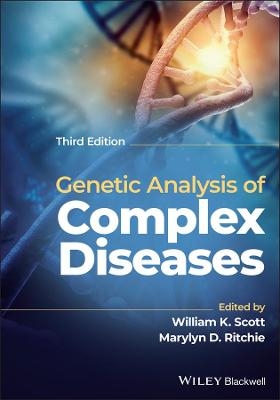
New Frontiers in the Study of Gene Functions
Springer-Verlag New York Inc.
978-1-4612-9030-8 (ISBN)
and Zipser. D . . 1973, Mutants of Escherichia coli with a defect in the degradation of nonsense fragments, Nature New Bioi. 243:238-241. Charette. M. F. , Henderson, G. W. , and Markovitz, A.
1 The Role of Cis- and Trans-Acting Functions in Simian Virus 40 Gene Regulation.- 1. Introduction.- 2. Early Viral Transcriptional Program.- 3. Late Viral Transcriptional Program.- 4. Discussion.- References.- 2 Regulation of the Heat-Shock Response in Escherichia coli.- 1. Introduction.- 2. Transcription of the Heat-Shock Genes.- 3. Regulation of rpoH and ?32.- 4. Function of the Heat-Shock Proteins.- 5. Summary.- References.- 3 Negative Control of DNA Replication Revealed in Composite Simian Virus 40-Bovine Papillomavirus Plasmids.- 1. Overview.- 2. Introduction.- 3. Results.- 4. Discussion.- References.- 4 DNA Supercoiling as a Regulator of Bacterial Gene Expression.- 1. Introduction.- 2. Results and Discussion.- References.- 5 Retrotransposition in Yeast.- 1. Introduction.- 2. Experiments.- 3. Speculation.- References.- 6 Comparative Genetic Analysis of Homeobox Genes in Mouse and Man.- 1. Introduction.- 2. Murine Homeobox Genes.- 3. Human Homeobox Genes.- 4. Comparative Genetic Relationships between Species.- 5. Comparative Genetic Relationships within Species.- 6. Possible Functional Relationships between Homeobox Loci and Linked Genes.- 7. Discussion.- References.- 7 Eukaryotic Transcriptional Specificity Conferred by DNA-Binding Proteins.- 1. Introduction.- 2. Results and Discussion.- 3. Concluding Remarks.- References.- 8 Chromatin Structure Near an Expressed Gene.- 1. Introduction.- 2. Results.- 3. Discussion.- References.- 9 Specificity of Gene Expression and Insertional Mutagenesis in Transgenic Mice.- 1. Introduction.- 2. Experiments and Results.- References.- 10 Retroviruses as Insertional Mutagens.- 1. Introduction.- 2. Insertion of Moloney Murine Leukemia Viruses into the Germ Line of Mice.- 3. Expression of the Proviral Genome in Mov Substrains ofMice.- 4. Induction of Two Insertional Mutations.- 5. Insertional Mutagenesis by Retroviruses and DNA Injection.- References.- 11 P Transposable Elements and Their Use as Vectors for Gene Transfer in Drosophila.- 1. Introduction.- 2. Results and Discussion.- References.- 12 Mapping and Manipulating Immunoglobulin Functions.- 1. Introduction.- 2. Immunoglobulin Gene and Protein Structure.- 3. Production of Monoclonal Immunoglobulins from Mouse and Man.- 4. Uses of Specific Immunoglobulins.- 5. Optimizing Immunoglobulin Structure for Therapy.- 6. Identifying the Molecular Requirements for Immunoglobulin Synthesis and Function.- 7. Future Studies on the Structural and Regulatory Mutants.- References.- 13 T4: A T-Cell Surface Protein Mediating Cell-Cell and Cell-AIDS Virus Interactions.- 1. Introduction.- 2. Results.- References.- 14 Identifying the Determinants of Protein Function and Stability.- 1. Introduction.- 2. Repressor and Cro Background.- 3. Isolation of Phenotypically Defective Mutants.- 4. Structural Distribution of Mutant Sites.- 5. Why Are Mutant Proteins Nonfunctional?.- 6. Phenotypic Reversion.- 7. Summary.- References.
| Erscheint lt. Verlag | 14.10.2011 |
|---|---|
| Reihe/Serie | New Horizons in Therapeutics |
| Zusatzinfo | 27 Illustrations, black and white; 218 p. 27 illus. |
| Verlagsort | New York, NY |
| Sprache | englisch |
| Maße | 152 x 229 mm |
| Themenwelt | Medizin / Pharmazie ► Medizinische Fachgebiete |
| Studium ► 2. Studienabschnitt (Klinik) ► Humangenetik | |
| Schlagworte | cell lines • Chromosom • DNA • Escherichia coli • gene expression • genes • gene transfer • Promoter • transcription |
| ISBN-10 | 1-4612-9030-9 / 1461290309 |
| ISBN-13 | 978-1-4612-9030-8 / 9781461290308 |
| Zustand | Neuware |
| Haben Sie eine Frage zum Produkt? |
aus dem Bereich


